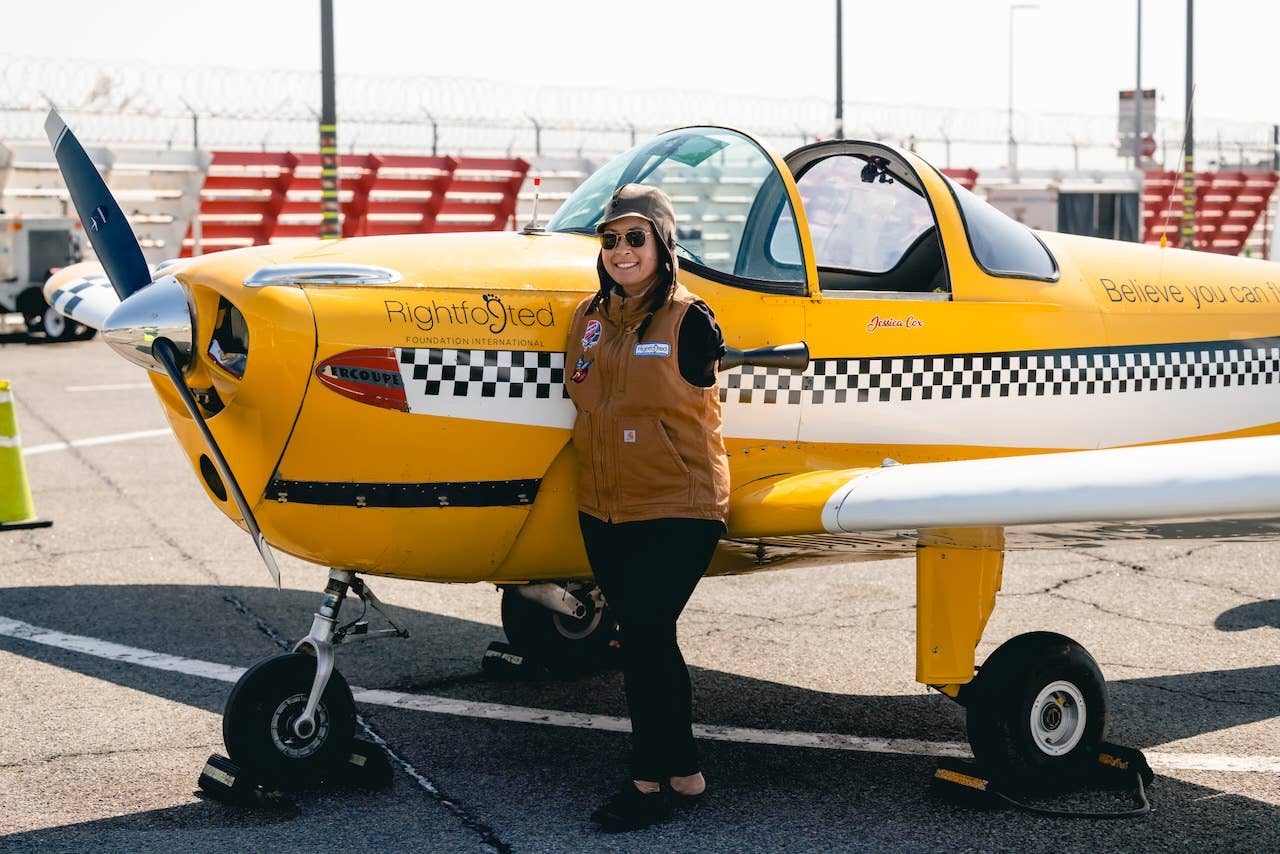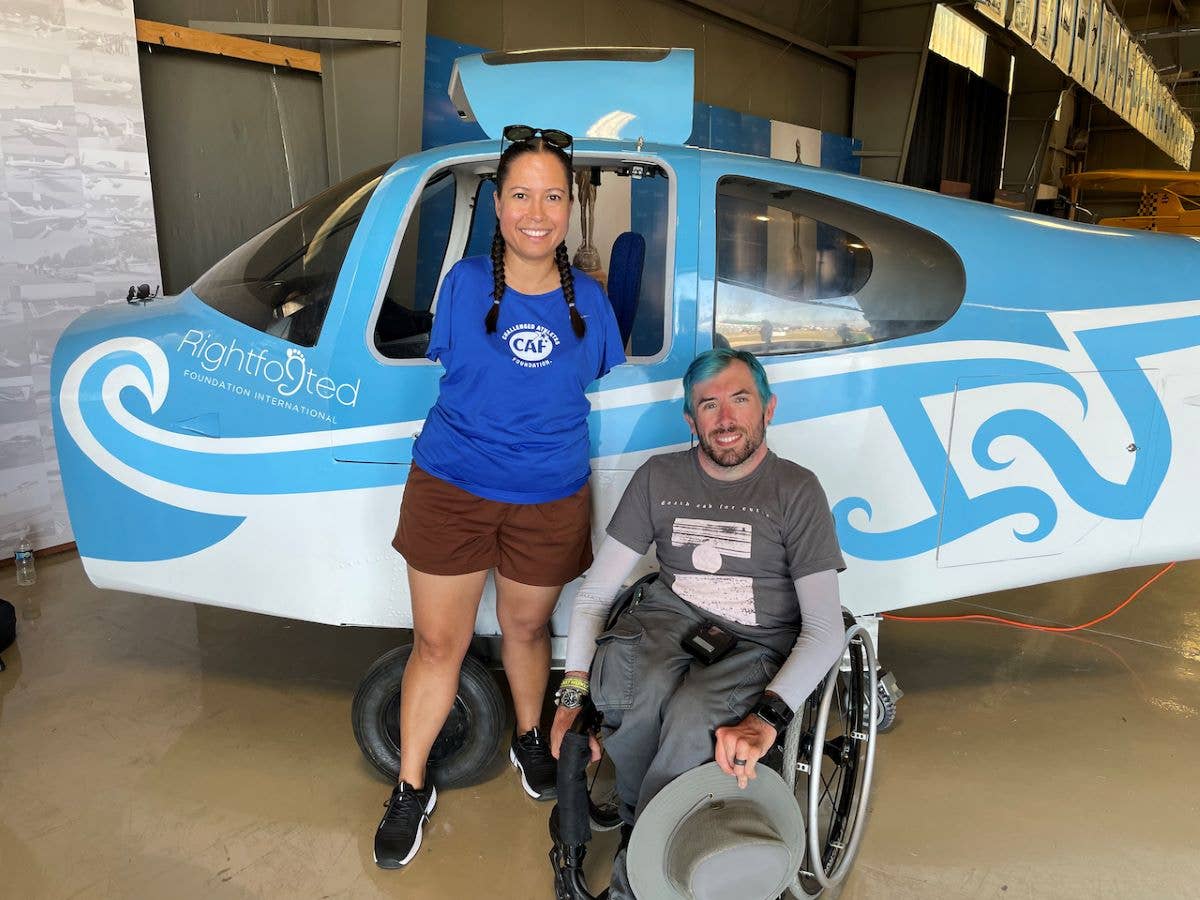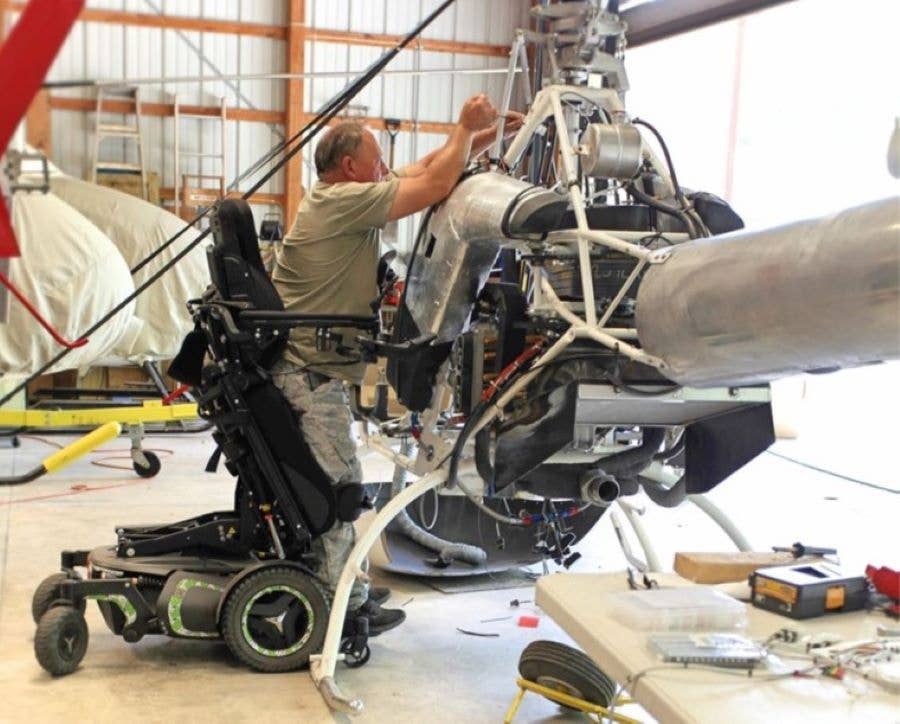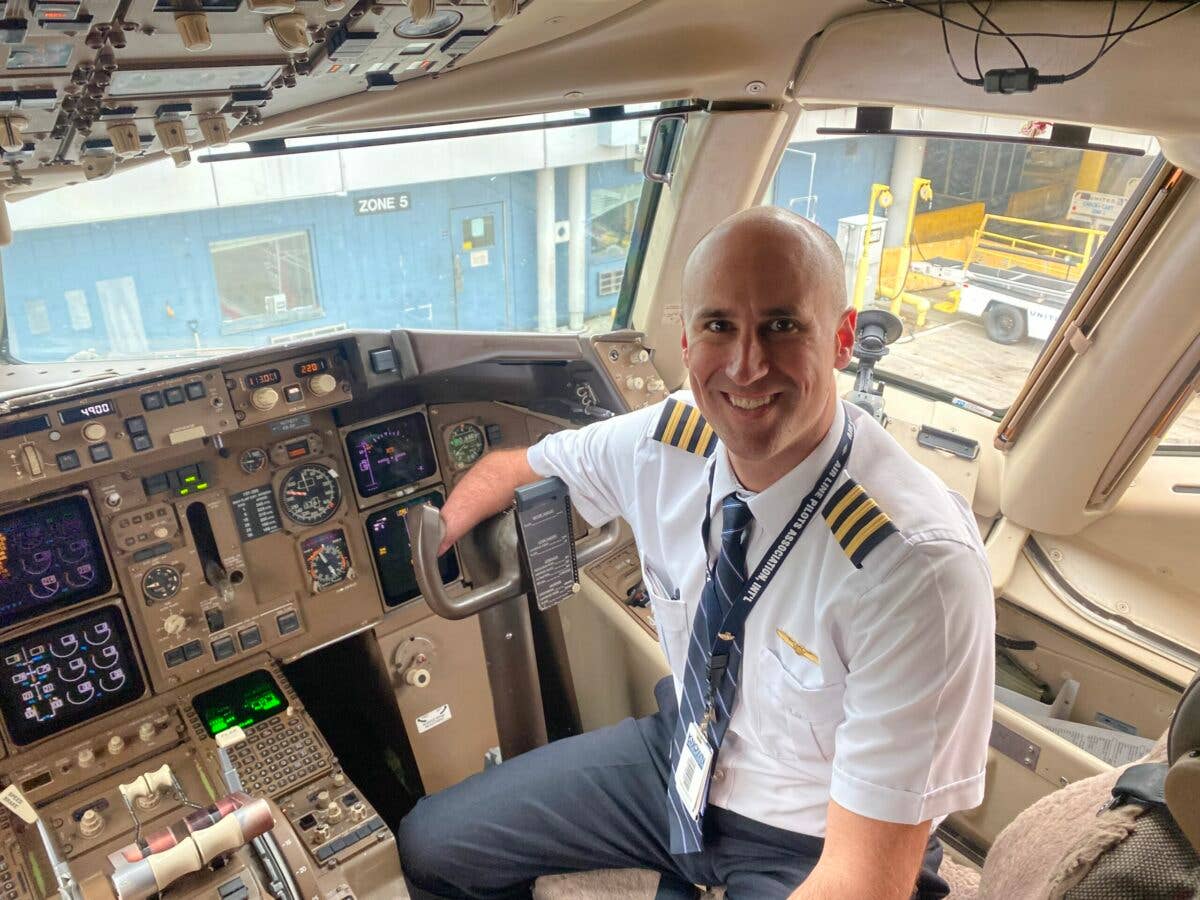The Tail Section Arrived—and Things Got Real
Now the clock is ticking to build “The Impossible Airplane,” and the pressure is on.
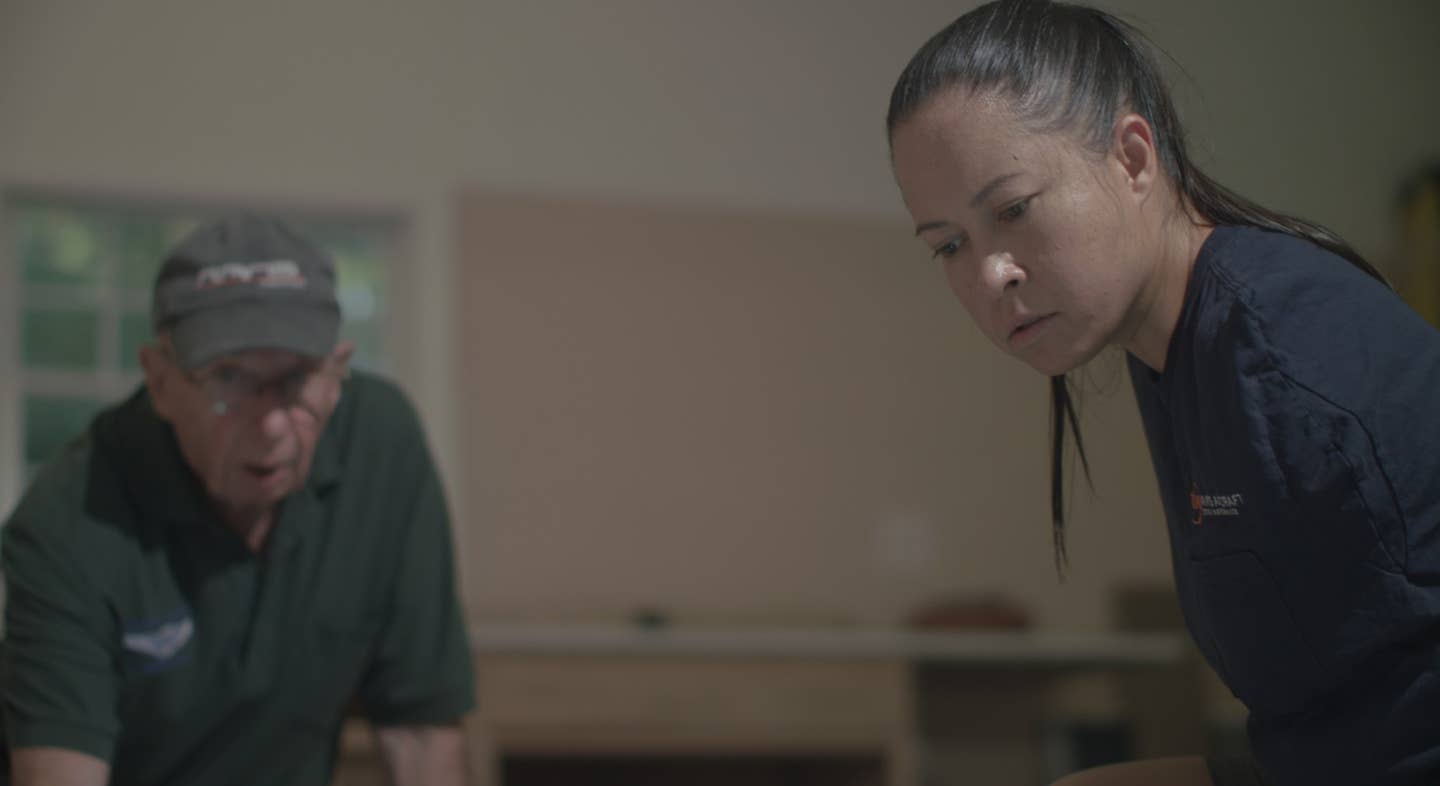
The author and “Bob The Builder,” take a look at the contents of the crate. [Courtesy: Jessica Cox]
I was not emotionally ready for the moment when the tail section for the Van’s Aircraft RV-10 arrived.
Have you ever had a big dream that seemed too big to become a reality? Building “The Impossible Airplane” has felt like that almost since its inception. Who thinks we can create the first airplane to be flown with just feet?
I’ve half expected people to step forward and say, “We came up with some great ideas, but this is too hard. It’s too different. It’s time to quit.” I’ve realized that imposter syndrome is a very loud, annoying, and persistent voice that isn’t easy to silence.
“We realized early on that the goal of proving that disability does not mean inability would be achieved by flying this airplane, not by building it.”
If this is the first time you’ve heard of “The Impossible Airplane,” a team and I plan to build the first airplane in history to be flown with just feet. My team and I will modify the left PIC seat, so I and anyone else without arms can fly entirely hands-free. I will then use it to fly across the country and maybe even around the world.
It’s not easy to make something new. One of the challenges we’re facing now is modifying the controls. I not only need to control pitch, roll, and yaw, but I need enough leverage to make the controls move in flight. The engineers on our team are trying to overcome the 150 pounds of force required by the rudder pedals and gear it down as low as possible so I can move it with the same force as the ailerons.
I’m not an engineer, so there’s a lot that they know that I have to trust them on, which doesn’t help when the idea of “The Impossible Airplane” already seems like a dream.
I was still subconsciously holding on to the idea that this isn’t really going to happen.
Then the kit arrived, and I realized that it was real, like rivets, spars, and sheet metal real.
I remember standing there with the 300-pound box marked with “Van’s Aircraft” in big red spray paint with the word “Rightfooted” scrawled right next to it. It was only the tail section, but it was the first of the five crates of materials that will become “The Impossible Airplane.”
All The Feels Hit
I felt the emotions of the moment wash over me. It wasn’t a dream anymore. It was real.
We realized early on that the goal of proving that disability does not mean inability would be achieved by flying this airplane, not by building it. So, the thought of me riveting and bucking and Cleco-ing wasn’t in the cards. It would simply take too long to reengineer the building process.
That’s when a very generous volunteer stepped forward to help. We’ll call him “Bob the Builder.” His name is, in fact, Bob, so that helps.
Bob is part of an EAA chapter in New Jersey, and he and the members there have put together many amateur-built aircraft over the years. One of the first was an RV-10 Bob built with his son.
So, we will be designing the custom controls and (hopefully) building a flight sim in Arizona while the physical body of the airplane is built in New Jersey.
Asking all my #aviation friends: Is there a website for designing your own airplane paint scheme?
— Jessica Cox (@jess_feet) July 7, 2022
Not that I'm thinking of redoing #N26R's paint, this will be for the RV-10! pic.twitter.com/OrQe33kInF
The Marathon to the Finish Line
The kit arrived at Bob’s shop on June 23. I flew out a couple of days later, and on the 26th, Bob and I used a crowbar to peel the lid off the crate. With the help of my husband Patrick and our friend Gene Bunt, the executive director of the Ercoupe Owners Club, we quickly inventoried the contents and set them aside in a safe place to wait for their assembly.
And now I’m stressed about being able to see it to the finish line. There wasn’t any downtime getting to this point. But when I saw the crate and the kit, the reality hit that we don’t have any time to waste getting the rest of the project finished.
Some key challenges are finishing the custom controls, funding or getting Lycoming to donate an engine, settling on an avionics system, and deciding on all the customization options. (If you have suggestions, you can send them to me.)
They say that the first step is always the hardest. But it feels more like we’ve jumped off a cliff and need to build it on the way down.
In reality, though, it’s a long road to get it in the air and someday The Impossible Airplane will fly, one way or another.

Sign-up for newsletters & special offers!
Get the latest FLYING stories & special offers delivered directly to your inbox

